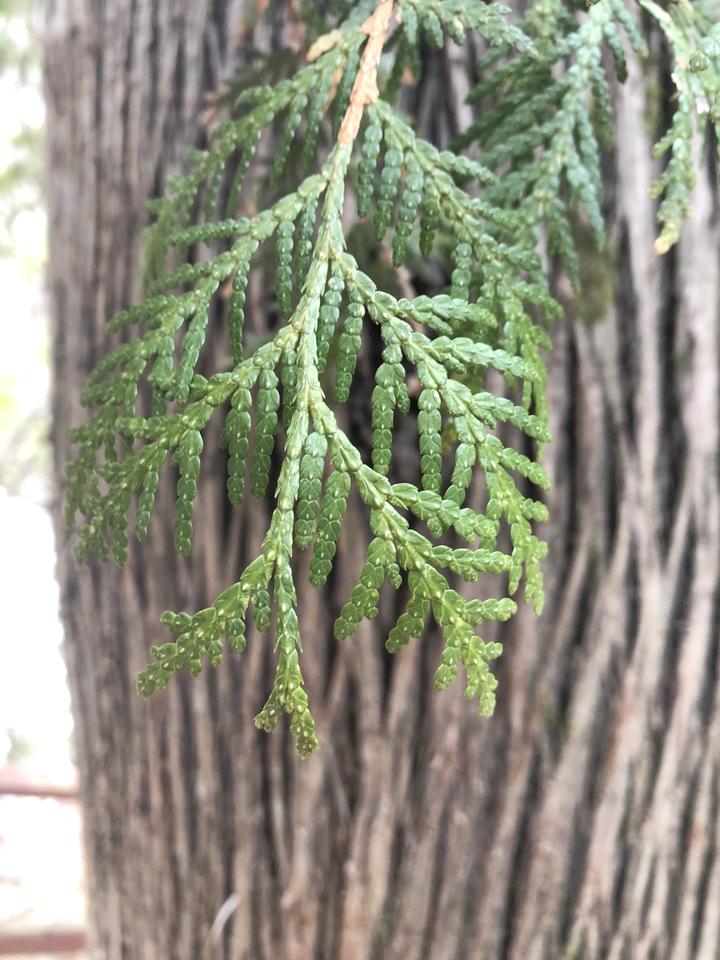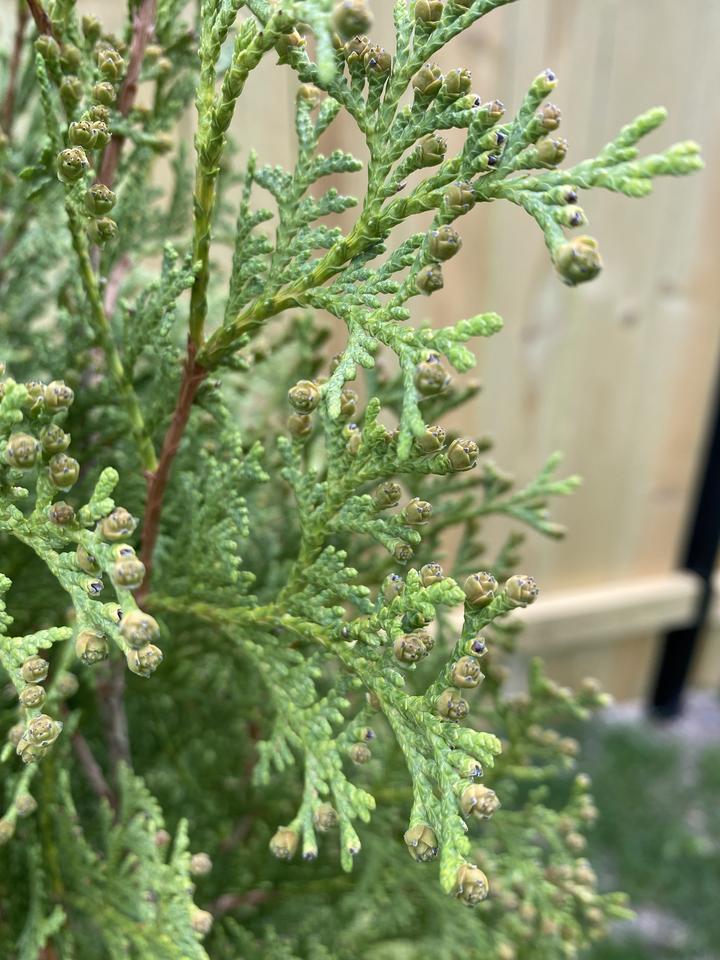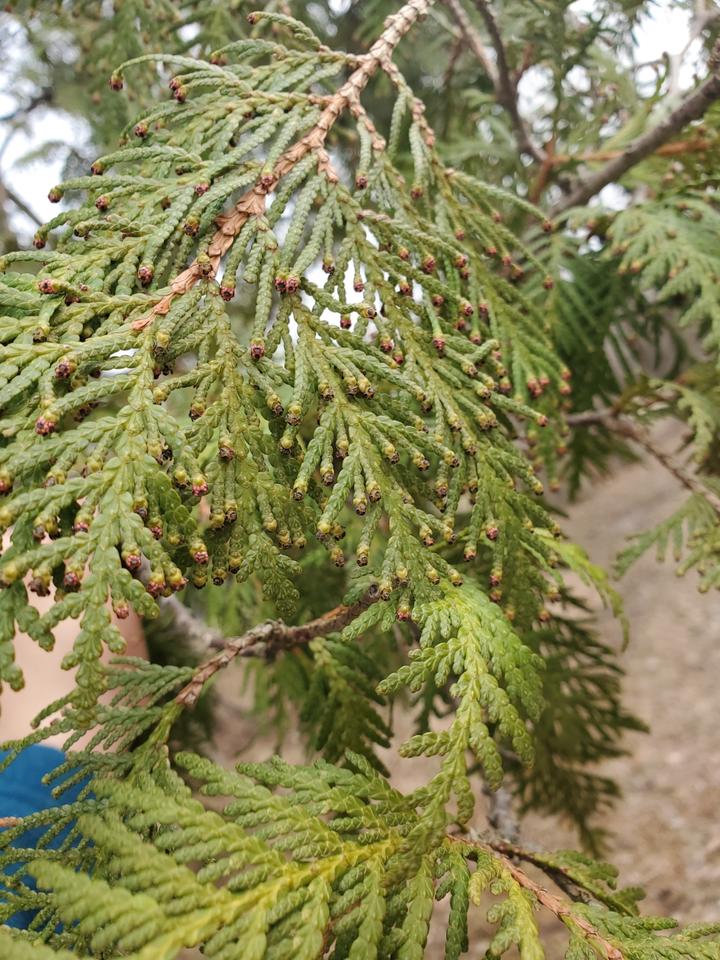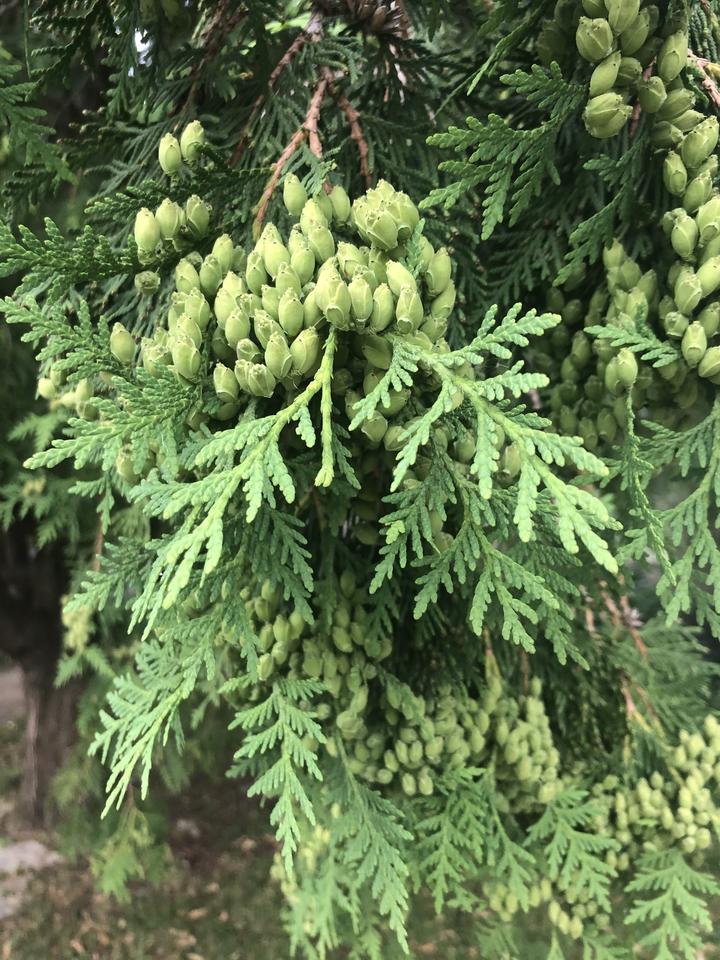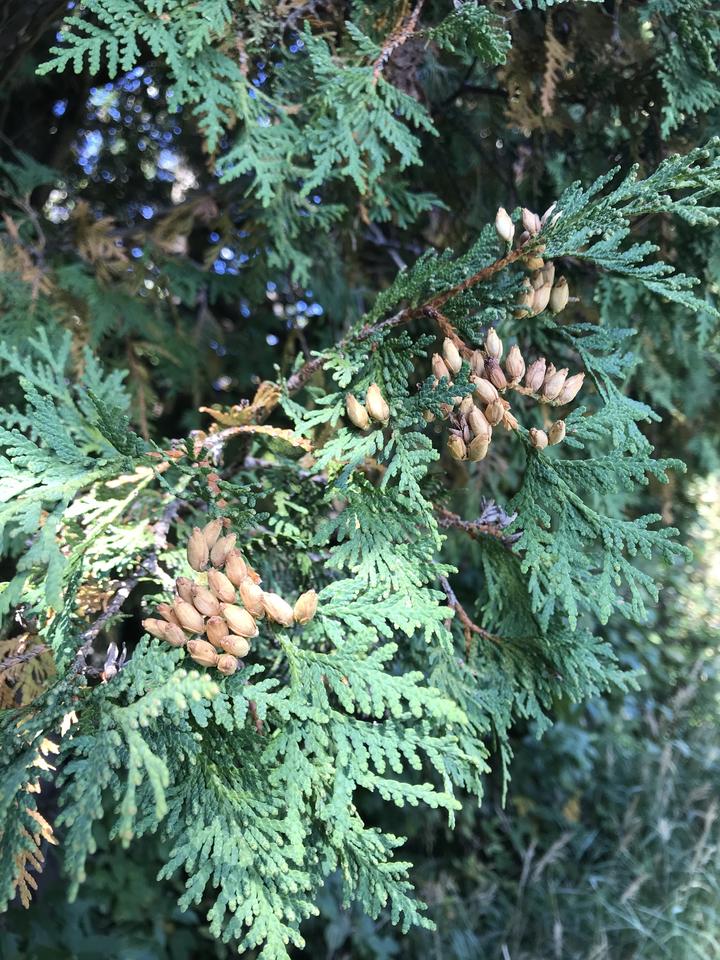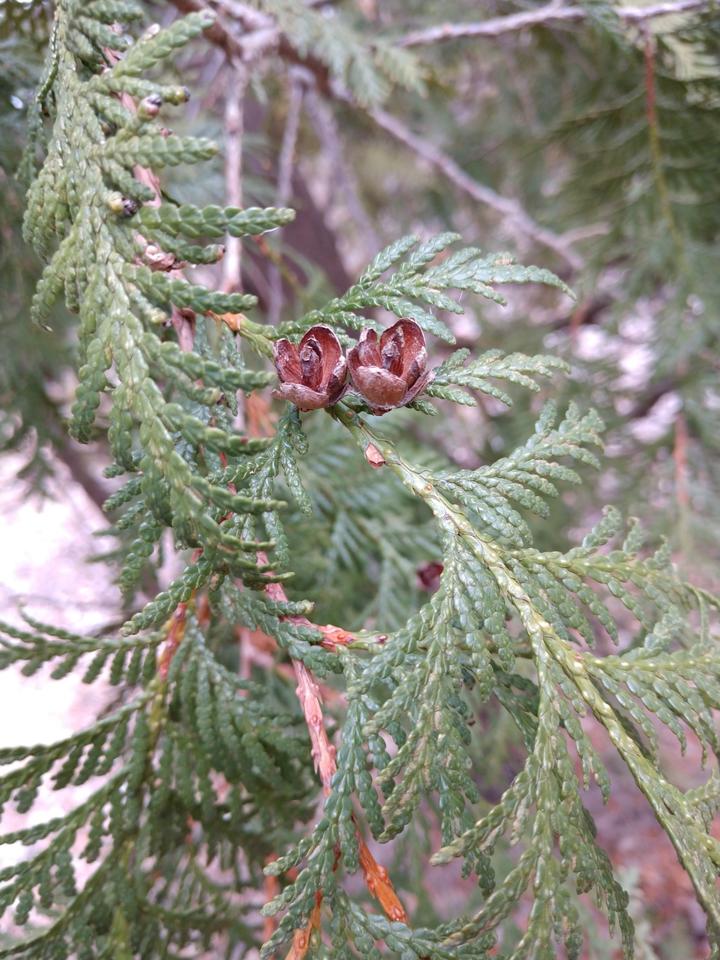More names for this plant
Anishinaabemowin: Giizhikaandag
Dakota: Ḣaŋteṡa çaŋ (cedar tree)
The Dakota and Anishinaabe were among the earliest people to name Minnesota’s plants and animals, as well as to understand them in relation to Minnesota’s climate and seasons. Those original names are still in use, and several are included on the Season Watch website.
Latin (or scientific name): Thuja occidentalis
The scientific community has a convention of assigning agreed-upon Latin names to every kind of organism. Using scientific names helps people communicate confidently about the same organism and organize lifeforms based on how closely related they are.
More common names: Arborvitae, white cedar
Page contents
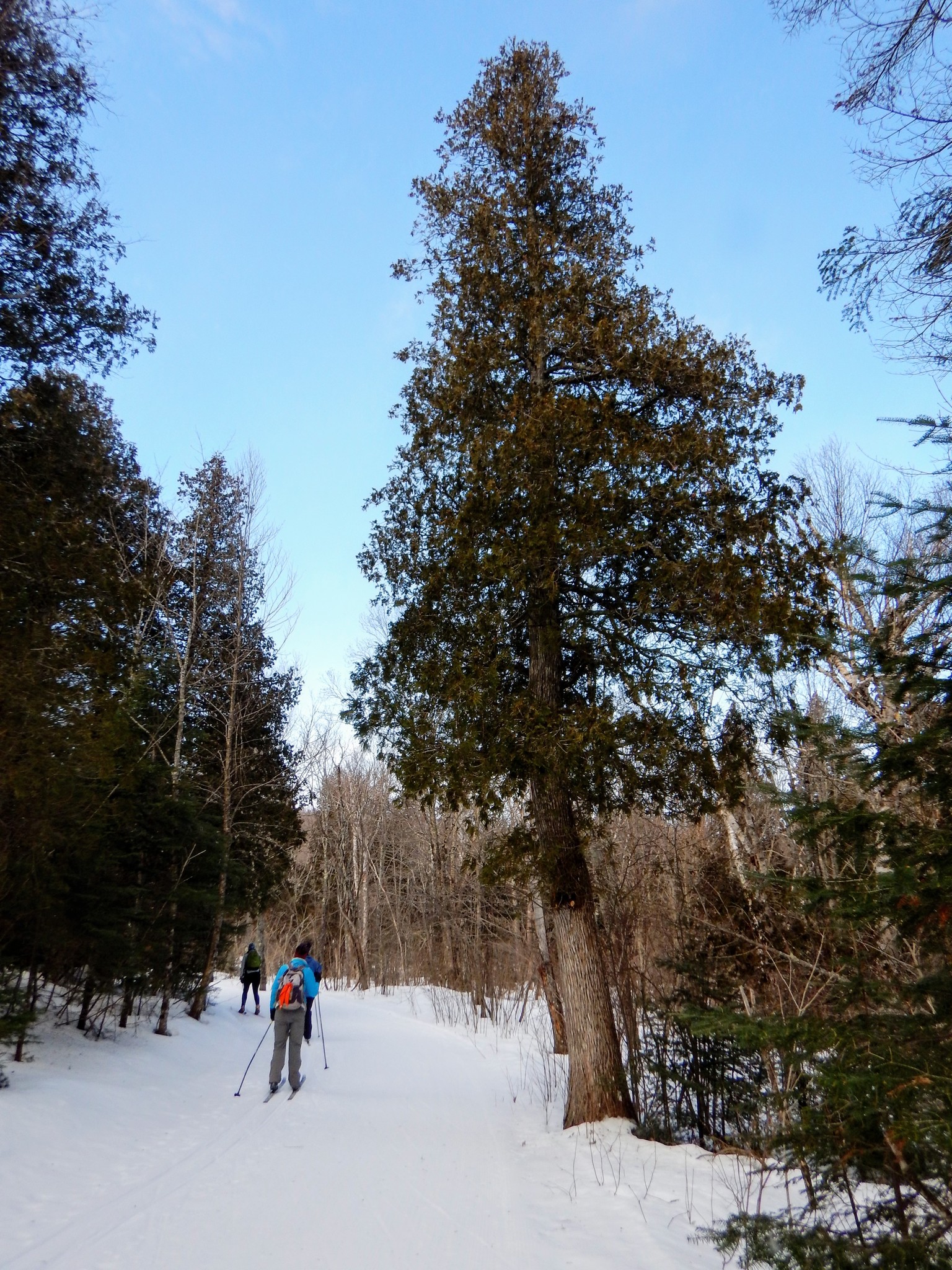
February 26, 2017, Cook County, Minnesota
Photo © Joe Walewski, some rights reserved (CC-BY-NC)
iNaturalist observation
About the northern white-cedar
- This conifer has flat, scale-like needles that cover its twigs and branches. The trunk is often twisted and its bark peels away in shreds.
- Northern white-cedar grows in damp, cool environments, for example, bogs.
- The needles are aromatic and rich in vitamin C.
- Northern white-cedar is dioecious, meaning it bears both male pollen and female seed cones. The female cones are light green and egg-shaped. They ripen in clusters at the ends of twigs.
- Fun fact: The wood is very durable and rot-resistant. Many Native American tribes have traditional uses for the wood, such as making canoes and cradle boards.
Visual guide to phenology
Scaly needles are present year-round. Watch for the appearance and changing status of cones.
Note to observers
This page explains general clues to watch for when observing northern white-cedar phenology. However, this page does not instruct observers on how to identify this plant or collect data in a standardized way.
- For help with identification, see Minnesota Wildflowers.
- For guidance on collecting data, see Nature’s Notebook.
Keep exploring Season Watch
Keep exploring Season Watch
Co-author: Audrey Negro, Minnesota Master Naturalist
